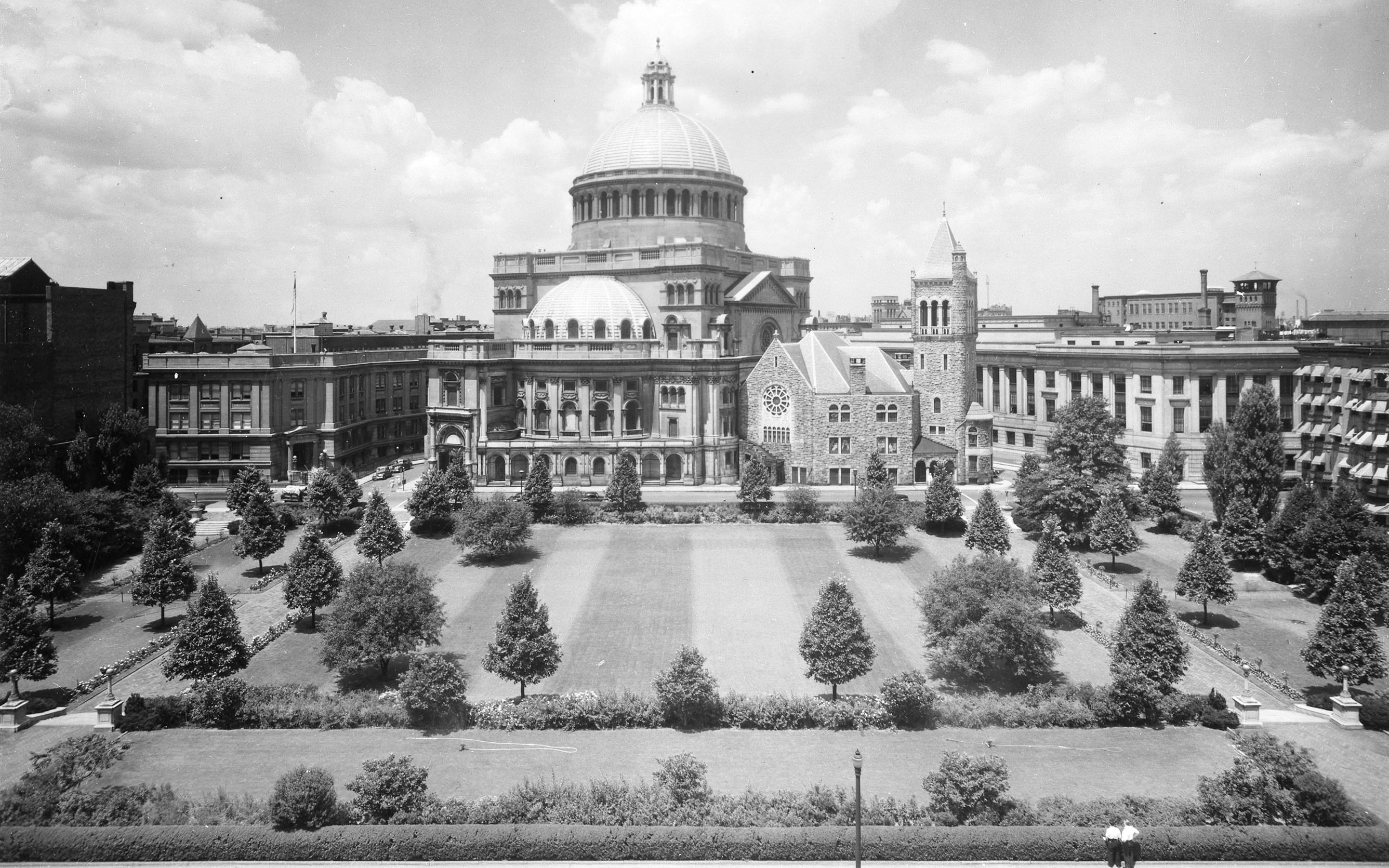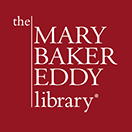The Mother Church Park

Church Park with The Mother Church Edifices, circa 1945. P08613.
Photograph by Lyman Whiting Fisher. © The First Church of Christ, Scientist.
While a reflecting pool sits prominently on today’s Christian Science Plaza in Boston, this wasn’t always the case. Those who visited the area surrounding The Mother Church from the 1910s through the 1960s encountered something different: a beautiful park.
Lyman W. Fisher, a photographer for The Christian Science Monitor, captured this wonderfully sculpted green space around 1945. The range of flowers was impressive, with tulips, geraniums, pansies, begonias, daffodils, and more. Trees included linden, poplar, magnolia, and various evergreens. When the reflecting pool was built in the 1960s, the lindens were relocated.
In the late 1890s, before it was a park, this area was an empty lot that “served as baseball field for the [Christian Science Publishing Society] employees in off hours.”1 The Church purchased the land that would become the park in spring 1909. The next year the park opened, with The Boston Post noting that the land had transformed what had only recently been “an unsightly dump, filled with piles of building bricks and old timber.”2 The Post also added that the development of the park had made it “now possible to view the great building [The Mother Church] as its architects intended that it should be seen.”3
This beautification prompted one Christian Scientist to send in a letter after Mary Baker Eddy’s death in 1910, suggesting this was a good location for a memorial to her. Alfred Farlow, the Committee on Publication, explained to the writer that Eddy felt strongly The Mother Church grounds were not an appropriate location for her memorial: “She [Eddy] told me about a year ago that she did not want anything of this kind. No one had said anything or asked her any questions but she took the pains to tell me this,—that she never wanted anything of that kind put up in that park in commemoration of her.”4
Development of the park continued over the next few decades. In 1917 buildings along Huntington Avenue that had fallen into disrepair were torn down to expand it. By 1932 even more buildings were removed, opening up “a view of The Mother Church edifices that is available for a distance of about seven hundred and fifty feet on Huntington Avenue.”5
In the early 1930s Arthur A. Shurcliff, a Boston landscape architect working under Chester Lindsay Churchill—the architect for the Christian Science Publishing House—further developed this urban green space. He also designed numerous landscapes in other states, including Colonial Williamsburg, Virginia.
By the early 1950s, gardners spent an average of three hours a day in season tending the flowers, trees, and lawn. As Monitor writer Millicent Taylor noted, “Beauty and peace seem to brood over it—and for some, prayerful hope and promise, too—as if its message were inseparable from that of the church in whose shelter it rests and grows.”6
To see the difference in the size of the park over 40 years, click these links to real estate atlases of Boston.
1898: https://www.flickr.com/photos/mastatelibrary/9451057661/in/album-72157634955138283/
1908: https://www.flickr.com/photos/mastatelibrary/9451741865/in/album-72157634962707694/
1917: https://www.flickr.com/photos/mastatelibrary/9460151184/in/album-72157634967613191/
1928: https://www.flickr.com/photos/mastatelibrary/9457625931/in/album-72157634974482238/
1938: https://www.flickr.com/photos/mastatelibrary/9458251785/in/album-72157634969569499/
- Millicent Taylor, “‘A Garden is a lovesome thing…,’” The Christian Science Monitor, June 8, 1953.
- “Selected Articles,” Christian Science Sentinel, October 29, 1910, https://sentinel.christianscience.com/shared/view/1me1wg3yz20?s=t.
- “Selected Articles,” Christian Science Sentinel, October 29, 1910, https://sentinel.christianscience.com/shared/view/1kf5pprtgqg?s=t.
- Alfred Farlow to Anna B. Butler, 9 December 1910, V04554.
- “Item of Interest,” Christian Science Sentinel, March 25, 1933, https://sentinel.christianscience.com/shared/view/2lu5aj9icuo?s=t.
- Taylor, “‘A Garden is a lovesome thing….’”

